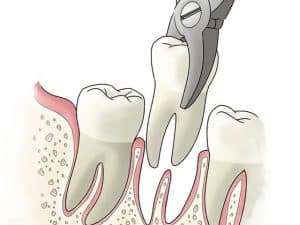Tooth Extraction
Tooth Extraction in Iran
Best tooth extraction clinic in Iran
More than 35.000 Iranian and foreign patients are going to the tooth extraction clinic in Iran each year. Tooth extraction clinic in Iran is on top of the Middle East regarding its skilled specialists and surgeons. Here are the best clinics for tooth extraction in Iran:
- Peris clinic
Tooth extraction cost in Iran
There is a significant difference between the cost of tooth extraction in Iran and other countries. The most important factors for its low price of it in Iran are:
- A large number of tooth extraction clinics in Iran
- A large number of applicants for tooth extraction in Iran
Tooth extraction surgery cost in Iran varies depending on the tooth extraction and the clinic. The average cost of tooth extraction in Iran is $80.
Tooth extraction cost in Iran in comparison with other countries
Tooth extraction costs $500 in the U.S., $350 in Europe, $200 in Thailand, and $200 in Turkey.
Best tooth extraction surgeon in Iran
More than 70.000 dental surgeries are being performed each year in Iran. Experienced Iranian doctors with an excellent records are performing the operations.
One of the most important factors for choosing a good surgeon for tooth extraction in Iran is the doctor has done many tooth extraction.
You can find the best doctors for tooth extraction in Iran on our website by following their experiences.
Why should you travel to Iran for tooth extraction?
Many patients travel to Iran for tooth extraction. One of the reasons for this matter is Iranian specialists and surgeons who have high surgery success rates.
- Low cost of tooth extraction in Iran
- Low cost of accommodation in Iran
- Well experienced doctors
- The high number of tooth extraction in Iran
Tooth extraction centers accordance with today’s European standards are performing the highest quality operations in Iran. Another reason for tooth extraction in Iran is its lower cost compared to other countries.
How long should I stay for tooth extraction in Iran?

About Tooth Extraction
If a tooth has been broken or damaged by decay, the dentist will try to fix it with a filling, crown, or other dental treatment. But when there’s too much damage for the tooth to be repaired, the tooth may need to be extracted or removed from its socket in the bone. It is usually done by a dentist or oral surgeon.
Types of tooth extraction
- A simple extraction: this procedure is on a tooth that can be seen in the mouth. For a simple extraction, the dentist loosens the tooth with an instrument called an elevator. Then the dentist uses forceps to remove the tooth.
- A surgical extraction: this is a more complex procedure, which is used if a tooth may have broken off at the gum line or has not erupted in the mouth. The oral surgeon will make a small incision into the gum to surgically remove the broken tooth or impacted wisdom tooth.
Recommended for
- Patients with the problem in which the tooth’s pulp gets involved with excessive infection and the tooth are extremely decayed also when root canal treatment and antibiotics are no longer working
- Patients who need an orthodontics procedure usually it need to make space for other teeth shift
- Children with milky tooth whose the tooth does not fall
- In the immune system compromised patients (the patients on chemotherapy or organ transplantation recipients) who are at risk of infection
Before Tooth Extraction
The dentist asks for some tooth X-rays for scheduling the procedure. The dentist needs to know a patient’s medical history Chronic Diseases and pregnancy. If the procedure is assumed to belong or the immune system is weakened, and the patient has a special medical history (like damaged or replaced heart valve, liver disease, replaced joint, congenital heart defect, or history of bacterial endocarditis), the dentist will prescribe antibiotics before and after the procedure. Patients should not smoke from the night before the operation.
During Tooth Extraction
At first, the dentist injects anesthetic medicine, and when the mouth is numb, he or she will start the procedure. The dentist will use a device to pull the tooth. In more complicated cases where the tooth does not get out, the dentist or oral surgeon will cut the gum and bone tissue to remove the tooth from its place. In the end, a particular gaze will be put on the empty toothpick to control the bleeding.
Recovery
It is recommended to bite the gaze gently for an hour to reduce bleeding and keep a gaze for several hours. Applying an ice bag is useful, too. If painkillers and antibiotics are prescribed, they must be taken. Feeling pain is normal in the first days. In the first 24 hours after the procedure rest and avoid smoking, hot foods and beverages, and also intense rinsing. Brushing and flossing are not avoided but should not be applied on that tooth side. After this time passed, the mouth should be rinsed with a solution of half a teaspoon of salt in a glass of water. It is better to continue eating soft foods up until the extraction site heals.